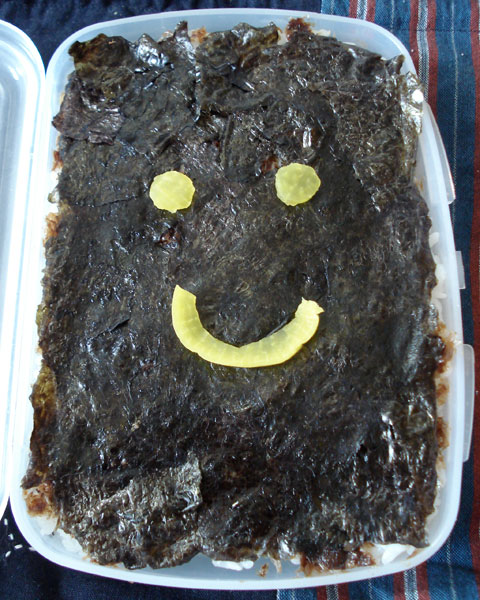
There are some dishes that are so basic to make that they barely ever get mentioned in cookbooks. Noriben (the word comes from nori and bento mashed together) is one of them. It's a really basic bento, consisting of just 3 or 4 ingredients: rice, nori seaweed, soy sauce, and often dried bonito flakes. It's tasty and inexpensive. It was standby for my mother when there was nothing else in the house except for a few pantry staples, and she had to make bento for two of the kids plus my father.
Whether or not you'd like noriben or not depends on whether you like the sea-taste of nori and soy sauce. It's one of those things that Japanese people tend to think that only a Japanese person could really love. It makes most Japanese people feel very nostalgic.
For the sake of nutritional balance you might want to have other, not too salty things in your bento box with noriben, such as steamed vegetables, chicken, fried tofu, or a piece of grilled fish.